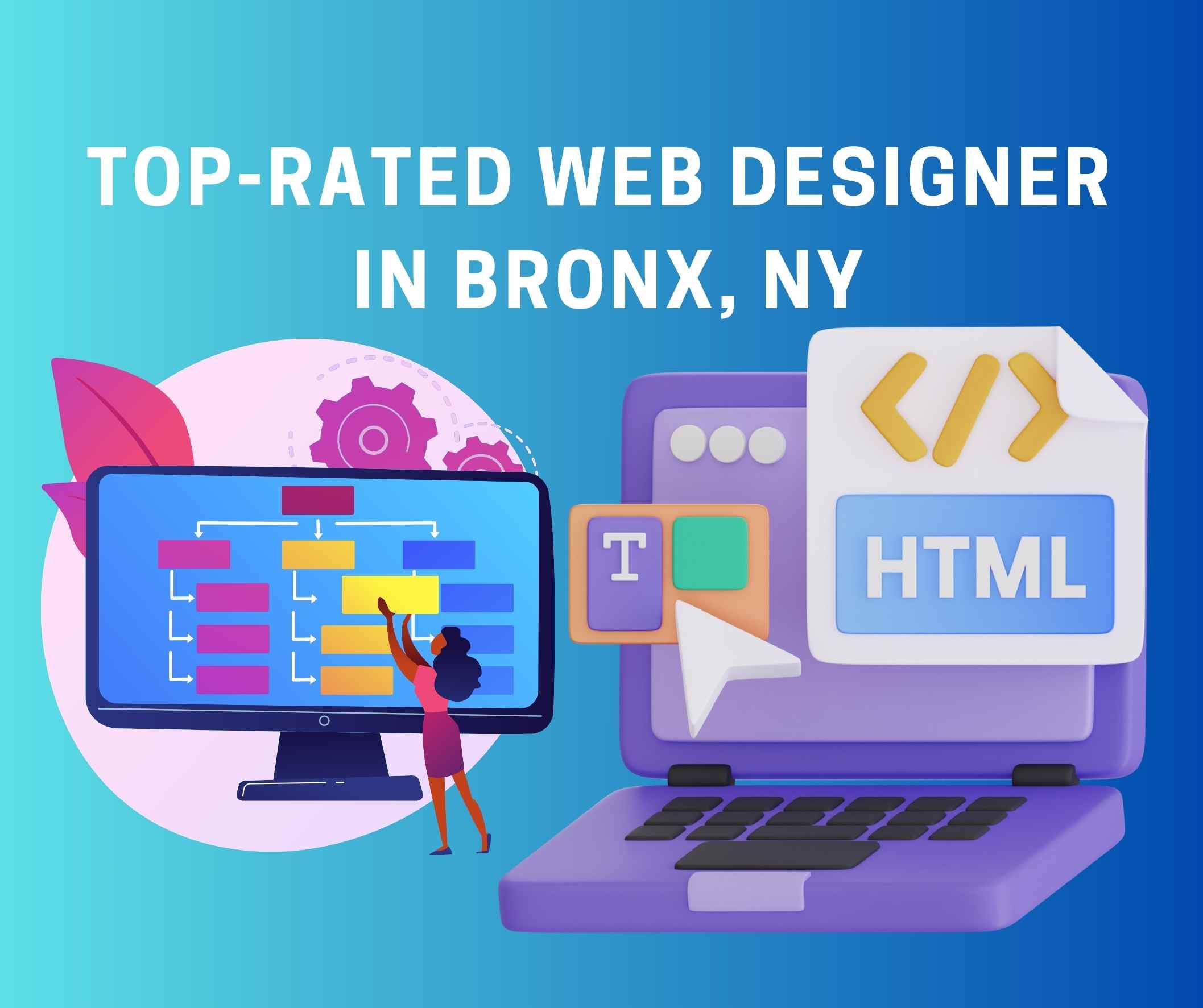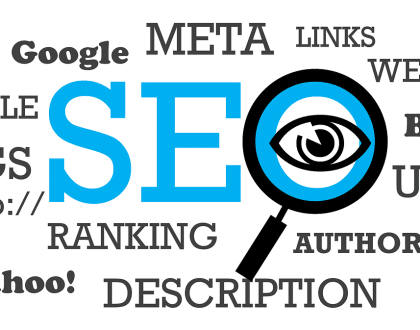How to Find the Top-Rated Web Designer in Bronx, NY

In today’s digital age, having a strong online presence is essential for businesses and individuals alike. A well-designed website can make a significant difference in attracting and retaining customers, showcasing your products or services, and establishing credibility. However, creating a professional website that effectively serves your needs requires the expertise of a skilled web designer. If you’re in the Bronx, New York, and you’re looking for a top-rated web designer, this comprehensive guide will walk you through the steps to find the perfect match for your web design project.
How to Find the Top-Rated Web Designer in Bronx, NY
Why Hiring a Top-Rated Web Designer Matters
Before diving into the specifics of how to find the best web designer in the Bronx, let’s first understand why hiring a top-rated web designer is crucial for your online success:
1. First Impressions Matter
Your website is often the first point of contact between your business and potential customers. A professionally designed website creates a positive first impression, instilling trust and credibility in your visitors.
2. Customized Solutions
Top-rated web designers have the expertise to tailor your website to your specific needs and goals. They can create a unique and customized design that sets you apart from your competitors.
3. User Experience
User experience (UX) is a critical aspect of web design. A skilled web designer understands how to create a user-friendly interface, ensuring that visitors can navigate your site easily and find the information they’re looking for.
4. Mobile Responsiveness
With the majority of web traffic coming from mobile devices, it’s essential that your website is responsive and performs well on smartphones and tablets. Top-rated web designers prioritize mobile responsiveness in their designs.
5. Search Engine Optimization (SEO)
A well-designed website can enhance your SEO efforts, making it easier for potential customers to find you on search engines like Google. Top-rated web designers understand the importance of SEO and can implement best practices.
6. Ongoing Support
Beyond the initial design, top-rated web designers often offer ongoing support and maintenance services, ensuring that your website remains up-to-date and secure.
Now that we’ve established why hiring a top-rated web designer is crucial, let’s explore the steps to find one in the Bronx, New York.
Step 1: Define Your Goals and Budget
Before you start searching for a web designer, it’s essential to have a clear understanding of your goals and budget for your web design project. Consider the following questions:
- What is the primary purpose of your website (e.g., e-commerce, informational, portfolio)?
- Do you have any specific design preferences or branding guidelines?
- What features and functionality do you need on your website (e.g., contact forms, blog, online store)?
- What is your budget for the web design project, including ongoing maintenance and support?
Having a well-defined set of goals and a budget range will help you narrow down your options and communicate your requirements effectively when you start reaching out to web designers.
Step 2: Research Web Designers in Bronx
Once you have a clear idea of your project’s goals and budget, it’s time to start researching web designers in Bronx, NY. Here are some effective ways to find potential candidates:
1. Online Search
Start with a simple online search using keywords like “Bronx web designer” or “web design services in Bronx, NY.” Search engines like Google can provide a list of web designers and agencies operating in the area.
2. Local Business Directories
Check local business directories, both online and offline, for listings of web design companies in Bronx. Websites like Yelp, Yellow Pages, and the Bronx Chamber of Commerce can be valuable resources.
3. Ask for Recommendations
Reach out to your network, including friends, family, and colleagues, to see if they have any recommendations for web designers in Bronx. Personal referrals can be particularly valuable in finding trustworthy professionals.
4. Social Media
Explore social media platforms like LinkedIn, Facebook, and Twitter to search for web designers in Bronx. Many professionals and businesses maintain a strong social media presence to showcase their work.
5. Web Design Portfolios
Visit websites of web designers and agencies that catch your eye during your research. Take a look at their portfolios to assess the quality of their work and see if their style aligns with your vision.
Step 3: Evaluate Their Portfolios
After compiling a list of potential web designers in Bronx, it’s time to delve deeper into their portfolios. A designer’s portfolio is a window into their skills, creativity, and previous work. Here’s what to look for when evaluating portfolios:
1. Design Quality
Assess the overall design quality of their previous projects. Are the websites visually appealing, modern, and professional? Pay attention to factors like color schemes, typography, and layout.
2. Relevance
Look for projects in the designer’s portfolio that are similar to your industry or project goals. A web designer with experience in your niche may better understand your specific needs.
3. Functionality
Examine the functionality of the websites in the portfolio. Are they easy to navigate, and do they offer a smooth user experience? Check if the websites load quickly and are mobile-responsive.
4. Creativity
Consider the level of creativity displayed in the portfolio. Does the designer have a unique and innovative approach to design, or do the websites seem generic?
5. Client Feedback
Some portfolios may include client testimonials or case studies. Reading feedback from previous clients can provide insights into the designer’s professionalism, communication, and project management skills.
Step 4: Check for Reviews and Ratings
In addition to reviewing portfolios, it’s crucial to check for reviews and ratings of the web designers or agencies you’re considering. Online reviews can offer valuable insights into the client experience and the designer’s reputation. Here’s where to find reviews:
1. Google Reviews
Search for the web designer or agency on Google, and you’ll often find reviews and ratings from previous clients. Pay attention to both positive and negative feedback to get a well-rounded view.
2. Yelp
Yelp is a popular platform for business reviews, including web designers. Look for designers in Bronx, NY, on Yelp and read the reviews to gauge client satisfaction.
3. Social Media
Check the designer’s social media profiles for client reviews and comments. Many businesses encourage customers to leave feedback on platforms like Facebook and LinkedIn.
4. Web Design Directories
Some web design directories and platforms, such as Behance and Dribble, allow clients to leave reviews and ratings for designers and their work.
Step 5: Contact and Interview Potential Designers
After narrowing down your list of potential web designers based on portfolio quality and reviews, it’s time to reach out and initiate contact. Here’s how to approach this step:
1. Email or Contact Form
Send an initial email or use the contact form on the designer’s website to express your interest in their services. Provide a brief overview of your project, goals, and budget.
2. Phone Call
Consider scheduling a phone call or video conference with the designer to discuss your project in more detail. This conversation can help you gauge their communication skills and professionalism.
3. Ask Questions
Prepare a list of questions to ask potential designers during the interview. Here are some essential questions to consider:
- How long have you been in the web design industry?
- Can you provide references from previous clients?
- What is your design process from initial concept to completion?
- Do you have experience with projects similar to mine?
- What is your pricing structure, and what does it include?
- How do you handle revisions and feedback during the design process?
- What is your estimated timeline for completing my project?
- Do you offer ongoing maintenance and support services?
4. Request a Proposal
Ask designers to provide a detailed proposal that outlines the scope of work, project timeline, cost estimates, and any additional services they offer. This proposal will help you compare different designers and make an informed decision.
Step 6: Check References
Before making a final decision, it’s essential to check the references provided by the web designer. Speaking with previous clients can give you valuable insights into the designer’s performance, reliability, and overall experience of working with them.
When contacting references, consider asking the following questions:
- Were you satisfied with the designer’s work and the final outcome of your project?
- Did the designer meet project deadlines and budget expectations?
- How was the designer’s communication throughout the project?
- Did they handle revisions and feedback professionally?
- Would you recommend this designer to others?
Gathering feedback from references can help you assess the designer’s track record and whether they are a good fit for your project.
Step 7: Review Contracts and Agreements
Once you’ve selected a web designer in Bronx, it’s crucial to formalize the arrangement with a clear and comprehensive contract. A well-drafted contract protects both parties and ensures that all project details, expectations, and terms are documented. Here are some key elements to include in the contract:
Project scope: Define the scope of work, including all deliverables, features, and functionality.
Timeline: Specify the project timeline, milestones, and deadlines.
Payment terms: Outline the payment schedule, including any upfront deposits and payment methods.
Ownership: Clarify who owns the rights to the design and code upon project completion.
Revisions and changes: Detail the process for requesting and implementing revisions.
Communication: Define how communication will be conducted, including regular updates and meetings.
Confidentiality: Include a confidentiality clause to protect sensitive information.
Termination: Describe the conditions under which the contract can be terminated by either party.
Support and maintenance: Specify any ongoing support or maintenance services included in the contract.
Review the contract carefully, and if you have any questions or concerns, discuss them with the designer before signing. It’s advisable to seek legal counsel if you’re unsure about any contractual terms.
Step 8: Collaborate and Provide Feedback
Once the contract is signed, it’s time to start collaborating with your chosen web designer. Effective communication is key to a successful web design project. Here are some tips for a productive collaboration:
Provide Clear Feedback:
Be specific when providing feedback on design concepts and drafts. Clearly articulate what you like and dislike, and offer constructive suggestions for improvement.
Stay Involved:
Stay engaged throughout the design process and participate in regular check-ins or status meetings to ensure the project is on track.
Be Responsive:
Respond promptly to any requests or queries from the designer to avoid delays in the project timeline.
Trust Their Expertise:
While it’s essential to communicate your preferences and goals, trust the designer’s expertise and creative judgment.
Request Updates:
Ask for regular updates on the project’s progress and request access to a development or staging site to preview the website as it evolves.
Test and Review:
Once the initial design is complete, thoroughly test the website for functionality, compatibility, and user experience. Provide feedback for any necessary adjustments.
Step 9: Finalize the Website
As the web designer makes revisions and refinements based on your feedback, you’ll eventually reach a point where the website is ready for finalization. Here are the steps to finalize your website:
Quality Assurance:
Conduct a final round of quality assurance testing to ensure that all features work correctly, links are functional, and content is error-free.
Mobile Responsiveness:
Verify that the website is fully responsive and displays correctly on various devices and screen sizes.
SEO Optimization:
Ensure that the website is optimized for search engines by including relevant keywords, meta tags, and proper HTML markup.
Content Migration:
If you’re migrating content from an old website, ensure that all content is successfully transferred and formatted.
Security:
Implement security measures, such as SSL certificates, to protect your website and user data.
Launch Plan:
Plan the official launch of your website, including any marketing or promotional efforts to announce its release.
Step 10: Monitor and Maintain Your Website
Once your website is live, the work isn’t over. Regular monitoring and maintenance are essential to ensure your website continues to perform well and remains secure. Here are some ongoing tasks:
Performance Monitoring:
Use tools like Google Analytics to track website traffic and user behavior. Monitor performance metrics and make improvements as needed.
Content Updates:
Keep your website content fresh and up-to-date. Regularly add new content, update information, and remove outdated material.
Security Updates:
Stay vigilant about security by keeping your website software, plugins, and themes up-to-date. Regularly back up your website to prevent data loss.
SEO Maintenance:
Continuously optimize your website for search engines by monitoring keyword rankings and making necessary adjustments.
User Feedback:
Listen to user feedback and make improvements based on their suggestions or pain points.
Regular Backups:
Regularly back up your website to protect against data loss in the event of technical issues or cyberattacks.
Performance Optimization:
Periodically review and optimize the website’s performance, including page load times and mobile responsiveness.
Summary:
Finding the top-rated web designer in Bronx, NY, requires careful research, evaluation, and collaboration. By following the steps outlined in this guide, you can identify a web designer who aligns with your project goals, budget, and expectations. Remember that the success of your website ultimately depends on the quality of the designer you choose, so invest the time and effort to make an informed decision. With the right web designer by your side, you’ll be well on your way to creating a compelling online presence that helps you achieve your business or personal objectives.
Recommended Posts

Local SEO vs. Global SEO: A Comprehensive Guide
May 14, 2025



